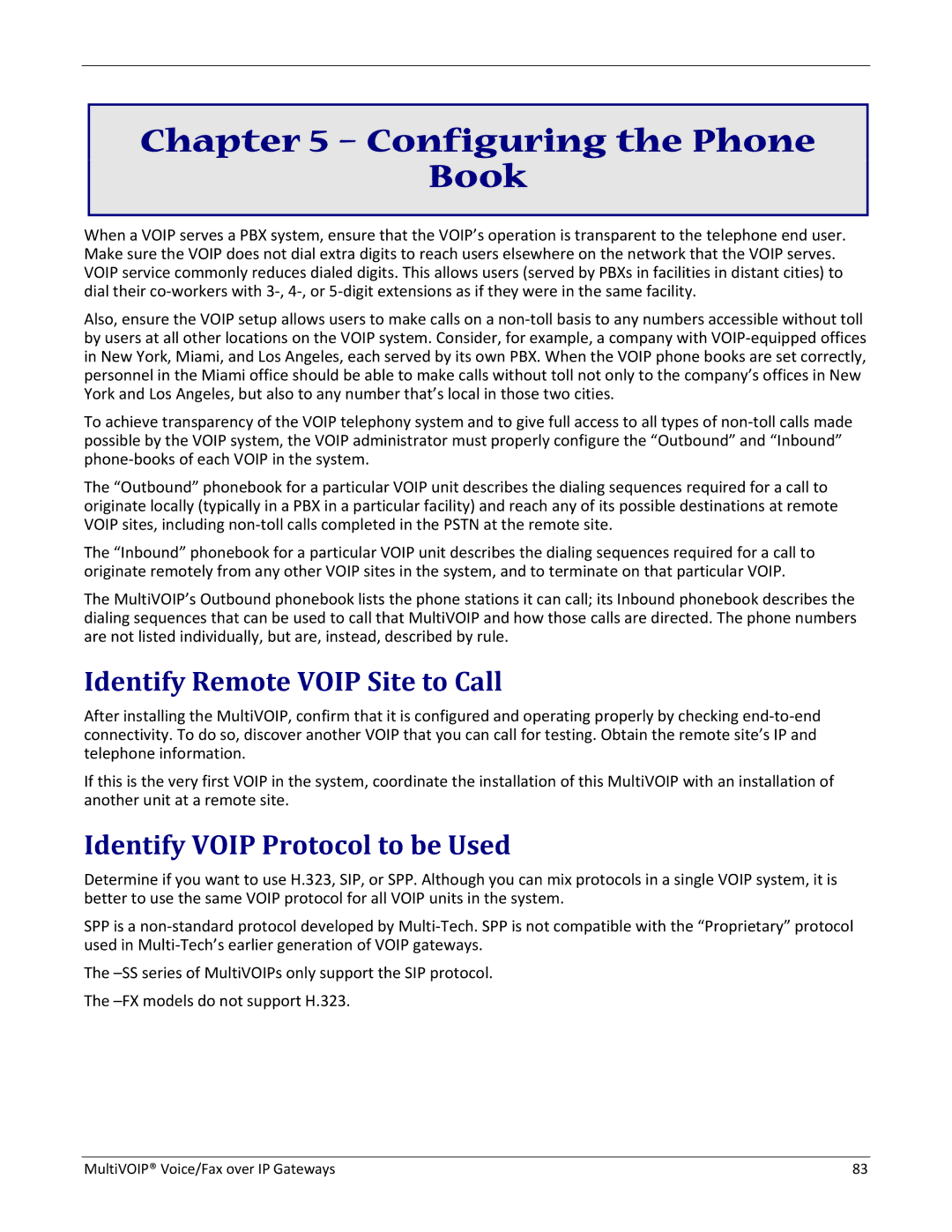
Chapter 5 – Configuring the Phone
Book
When a VOIP serves a PBX system, ensure that the VOIP’s operation is transparent to the telephone end user. Make sure the VOIP does not dial extra digits to reach users elsewhere on the network that the VOIP serves. VOIP service commonly reduces dialed digits. This allows users (served by PBXs in facilities in distant cities) to dial their co‐workers with 3‐, 4‐, or 5‐digit extensions as if they were in the same facility.
Also, ensure the VOIP setup allows users to make calls on a non‐toll basis to any numbers accessible without toll by users at all other locations on the VOIP system. Consider, for example, a company with VOIP‐equipped offices in New York, Miami, and Los Angeles, each served by its own PBX. When the VOIP phone books are set correctly, personnel in the Miami office should be able to make calls without toll not only to the company’s offices in New York and Los Angeles, but also to any number that’s local in those two cities.
To achieve transparency of the VOIP telephony system and to give full access to all types of non‐toll calls made possible by the VOIP system, the VOIP administrator must properly configure the “Outbound” and “Inbound” phone‐books of each VOIP in the system.
The “Outbound” phonebook for a particular VOIP unit describes the dialing sequences required for a call to originate locally (typically in a PBX in a particular facility) and reach any of its possible destinations at remote VOIP sites, including non‐toll calls completed in the PSTN at the remote site.
The “Inbound” phonebook for a particular VOIP unit describes the dialing sequences required for a call to originate remotely from any other VOIP sites in the system, and to terminate on that particular VOIP.
The MultiVOIP’s Outbound phonebook lists the phone stations it can call; its Inbound phonebook describes the dialing sequences that can be used to call that MultiVOIP and how those calls are directed. The phone numbers are not listed individually, but are, instead, described by rule.
Identify Remote VOIP Site to Call
After installing the MultiVOIP, confirm that it is configured and operating properly by checking end‐to‐end connectivity. To do so, discover another VOIP that you can call for testing. Obtain the remote site’s IP and telephone information.
If this is the very first VOIP in the system, coordinate the installation of this MultiVOIP with an installation of another unit at a remote site.
Identify VOIP Protocol to be Used
Determine if you want to use H.323, SIP, or SPP. Although you can mix protocols in a single VOIP system, it is better to use the same VOIP protocol for all VOIP units in the system.
SPP is a non‐standard protocol developed by Multi‐Tech. SPP is not compatible with the “Proprietary” protocol used in Multi‐Tech’s earlier generation of VOIP gateways.
The
The
MultiVOIP® Voice/Fax over IP Gateways | 83 |
